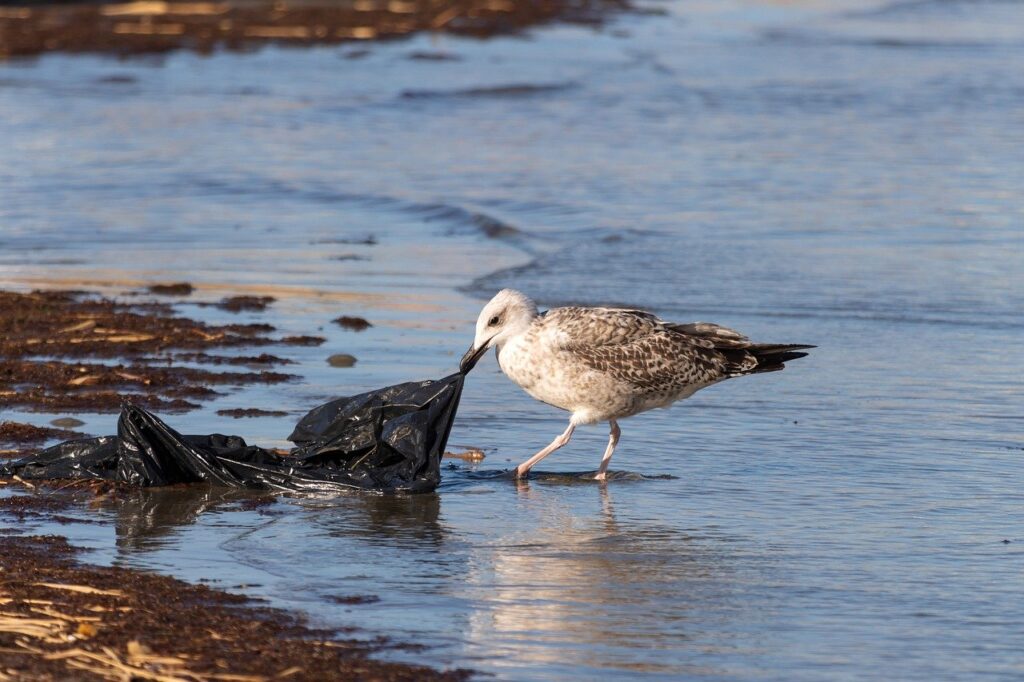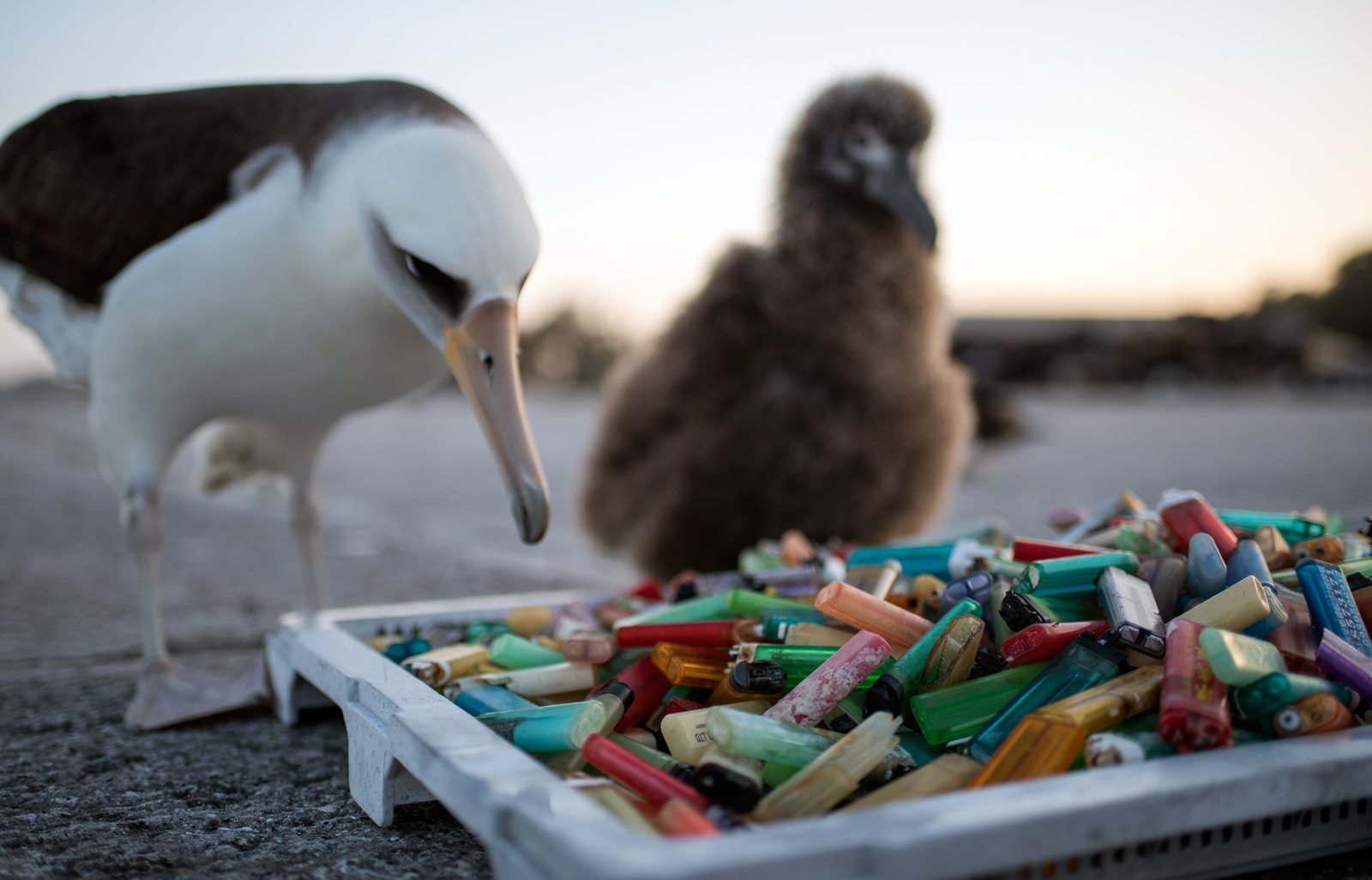What began as a cheap, convenient way to package items has quickly become an ecological crisis. Plastics have been mass produced since the 1940s, leaving a wake of pollution and a real threat to us, our wildlife, and our planet. Here are some jaw-dropping facts about the use of plastics, and how to fight plastic pollution for a healthier ecosystem, including the birds we so love.
Why Plastic Pollution is Dangerous

We all know that plastics aren’t good for the planet. But it’s important to look at their impact to know just how bad. For starters, plastic isn’t biodegradable, meaning that it could take a thousand or more years to break down, if it ever does. In the meantime, more than 280 million tons of plastic are discarded each year, and where does it go? Only 9% is recycled and 12% incinerated; that means about 80% piles up in landfills and in the environment. The ill effects of plastics are horrendous: the harmful chemicals in it leech into our water, plastics pollute beaches and other waterways, harming and killing sea life. And if plastic usage continues as it is, there will be 12 billion tons of plastics in our environment by 2050.
What are single-use plastics?
Single-use plastics are those that are intended to be used once before being thrown away. These include plastic bags, bottles, straws, wrappers, food containers, and so on. It’s been estimated that up to 50% of the plastic found in the world’s landfills are single-use plastics.
Watch this video to better understand the problem of single-use plastics:
The Impact of Plastic Pollution on Birds
Have you ever strolled the beach and found more trash than sand? Each year, 17.6 billion pounds of plastic is dumped, or finds its way, into the ocean. It’s sad but true: the large plastic detergent bottles and water bottles we casually discard end up in the ocean and are a real threat to sea life. Once it washes ashore, these plastics are then mistaken for food by shorebirds. Once digested, it quickly leads to death, if not disease from the toxic chemicals. A prime example is the Laysan Albatross. The adult birds bring their offspring plastic, thinking that it’s food. As a result, 40% percent of their chicks die before fledging, due to plastic ingestion.
But plastic isn’t just dangerous to one type of bird. A 2015 study of seabirds found that up to 90% of seabirds in the study had plastic in their stomachs. One problem is that seabirds often mistake small pieces of plastic for fish eggs, and feed on them unknowingly. And even if ingesting the plastic alone doesn’t kill the bird, they could develop a condition called “plasticosis,” which is severe damage to the stomach.

Did you know?
- Some plastics are manufactured to smell like food, making it more appealing to birds.
- Birds and other wildlife can also develop incurable lung diseases from eating plastic.
- Sharp plastics can pierce internal organs when ingested, proving fatal to birds.
- Birds that eat plastics often starve because their stomach feels “full,” so they don’t seek real food with the nutrients they need.
- Abandoned fishing gear can trap seabirds so that they drown or become easy prey for predators.
How to Reduce Your Plastic Usage

Avoid, reuse, or recycle single-use plastics. Try to avoid buying products with plastic packaging whenever possible. Find a place to refill your plastic bottles, or your own glass bottles, with everyday household items, like hand soap, detergent, and toothpaste. Take your reusable cloth bags to the store when shopping. And when discarding plastic containers, be sure to put them in your recycling bin.
Shop locally whenever possible. Buying local and seasonal products reduces the amount of plastic packaging needed to ship cross-country. It also reduces the carbon emissions used by large truckloads of products and supports local communities.
Choose products with minimal or sustainable packaging. Look for sustainable brands that use zero to minimal packaging, and therefore waste. Brands like Leaf Shave (found at the Chirp Refillables Station), which sells plastic-free razors and refills, as well as plastic-free packaging, are ideal. Rock Creek soaps, another brand offered at the Chirp store, uses compostable, biodegradable packaging for their natural, cruelty-free haircare products.
Swap plastic for glass, metal, and bamboo. Ditch the plastic bag for a cotton tote. Fill and refill a metal bottle instead of dozens of plastic water bottles. Take your travel mug to your favorite coffee place for a refill instead of buying a drink with a disposable cup. Buy glass, metal, and paper straws instead of plastic ones. There are so many ways to ditch plastic for better, reusable materials in your everyday life. Get creative!
Support, donate, and volunteer. Find a local beach cleanup to join. Donate to nature and bird conservation organizations. Learn how to become a brand ambassador for a sustainable brand. Look for places to join forces with likeminded nature lovers and earth ambassadors.
More Ways to Help
- 4 Tips for Sustainable Living
- How You Can Help the Declining Bird Population
- The Benefits of Bird-Friendly Coffee
- How Climate Change Affects Wild Birds (and What We Can Do)
- How You Can Help the Bees
- Poison-free Pest Control
- The Ultimate Guide to Creating a Southern California Bird Sanctuary
- Native, Bird-Friendly, Drought-Tolerant, and Firewise Plant Guide for the Big Bear Valley
Laysan Albatross photo courtesy of David Slater.


